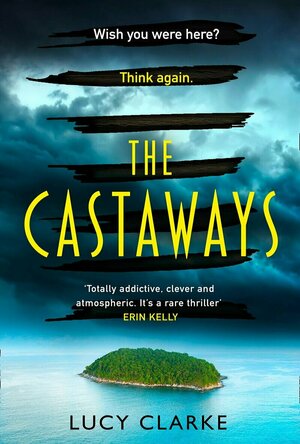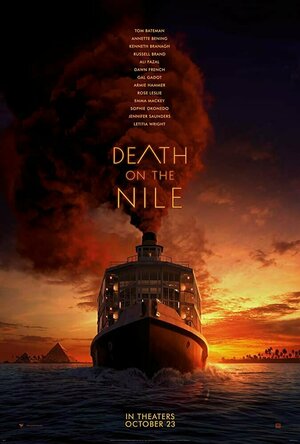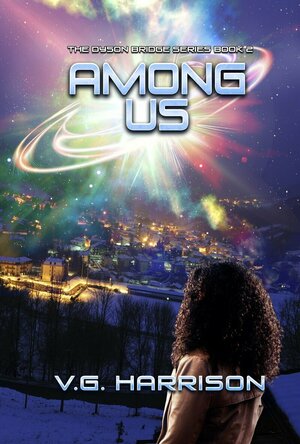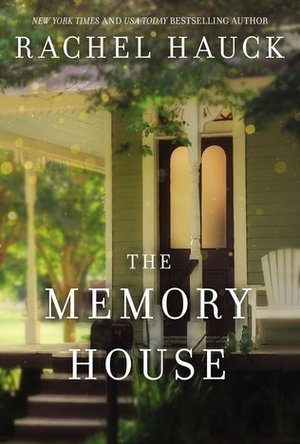
The Memory House
Book
From the New York Times bestselling author of The Wedding Dress comes a new captivating novel of two...
Hazel (2934 KP) rated The Castaways in Books
Oct 3, 2021
Lori and Erin are close having lost their parents at an early age. Things are not going too well for either of them but Lori in particular, so she books a holiday of a lifetime for them both to a Fijian island. Unfortunately, things don't go to plan and Lori finds herself on the plane without her sister. Disaster then ensues when the plan goes missing. Two years later, the pilot turns up - he has been working under an alias in Fiji.
What the heck happened? Why wasn't Erin on the plane? Where are the rest of the passengers? Did anyone else survive and why did the pilot go into hiding? So many questions!
Written in two distinct voices and time lines - Lori in the then and Erin in the now - the story follows Erin's search for the truth about what happened to her sister and the rest of the passengers and Lori's experience from the moment she realised something was going terribly wrong with the plane.
Lucy Clarke's writing is captivating and puts you right at the heart of the story; the two main characters are really well developed and you absolutely get a sense of the strong bond between the two sisters. The pacing is pretty good - the beginning is riveting, it dips a bit in the middle but then ramps up again towards the end. The plot is expertly weaved throughout with twists jumping from nowhere, just when you think you've worked it out, and with an ending that is quite satisfactory.
Overall, I enjoyed this book from an author I've never read anything from before and I would recommend to those who enjoy a bit of escapism albeit one with a few twists and hair-raising moments.
Thank you to HarperCollinsUK / HarperFiction and NetGalley for my copy in return for an honest, unbiased and unedited review.
LeftSideCut (3776 KP) rated Death on the Nile (2022) in Movies
Feb 15, 2022
There's glimpses of something good there. Kenneth Branagh can be hit or miss as far as I'm concerned. For every Belfast (soaringly wonderful) there's an Artemis Fowl (what I imagine a lobotomy feels like). This is somewhere in the middle. There are moments of promise sprinkled here and there, but they struggle to break through all the bloated hot air that is draped over everything.
All of the characters are ridiculous. I get that's part of it, but it just falls flat here. It's hard to enjoy comic relief when everyone is comic relief. Gal Gadot seems like she is half-arsing every line. Russell Brand feels jarringly out of place. I traditionally enjoy French & Saunders but they also feel alien in every scene they're in. I know this shouldn't really impact my view, but Armie Hammer look like he just wants to eat everyone he talks to. Even the usually reliable Annette Benning comes across completely disinterested. There's no chemistry anywhere, and it all just feels a bit odd. Branagh is pretty great as Poirot to his credit. He just about holds proceedings together along with Sophie Okonedo, and they both manage to inject some charisma when things become arduous, which is farily regularly.
A bit of a misfire then, but not a complete disaster. I can firmly file Death on the Nile under "films I don't really like, but would probably watch again if it was on TV, or maybe on Christmas day at my Mums house".

Wants And Needs (Fan Service #7)
Book
Fate will take them down a path they never thought they’d walk. Liam Being Autistic, I'm an...
Contemporary MM Romance
Debbiereadsbook (1608 KP) rated Among Us (Dyson Bridge #2) in Books
Oct 22, 2025
This is book 2 in the Dyson Bridge series, and it cannot be read as a stand alone, you MUST read Abandon Station first.
I said in my review for that book, that I was annoyed at that book,because it left me on a cliffhanger I did not see coming. And guess what?? I'm annoyed at THIS book because I DID see the cliff hanger coming!
This is only short, some 120 pages, and I could not see an end for Merida and her people coming at me from about half way through. There just weren't enough pages left!
Merida has escaped the Feds, and is seeking help to get her people home. Not just for themselves, but for this New Earth. If the station continues in its decaying orbit path, it will spell disaster. She does find some help, though, and they are a step closer to getting home. I liked that she got a surprise when she switched her communication device on!
BUT they aren't there yet, and time is moving on and running out for Merida and her crew. The epilepsy they have been diagnosed with, isn't what it seems and is leading to a much more sinister path for them.
Only Merida has a say. I can't remember in book 1, if it was just Merida ( I didn't mention it in my review!) but it is here. I think she needs to be the voice for her people though. Ordinarily, I would say I wanted to hear from everyone but I don't think this would have worked if they did.
SO, now we wait. Again! last time I had to wait 18 months to get this book! I hope it isn't quite so long this time.
4 very good, fully invested in Merida and her people, stars
*same worded review will appear elsewhere

Who Said Witness Protection Was Boring? (Mobster Mayhem #2)
J.F. Miev and Aria Clark
Book
MATTHEW It was supposed to be a quiet night of gaming. But then the power went out. No biggie—it...
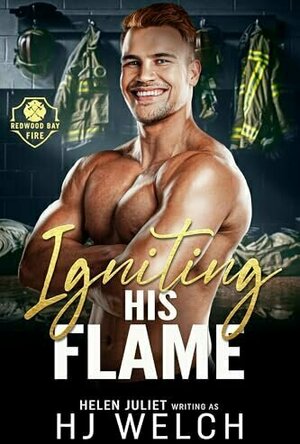
Igniting His Flame (Redwood Bay Fire #1)
Book
Love makes us all brave DARIO After escaping my controlling ex-boyfriend and moving to...

Striking The Match (Redwood Bay #3)
Book
Love will save the day TEDDY Everybody has celebrity crushes, right? You just don’t expect...
Lee (2222 KP) rated Okja (2017) in Movies
Jul 14, 2017
And Okja certainly is a bit different. We’re first introduced to CEO of Mirando Corporation, Lucy Mirando (Tilda Swinton) who has ‘bred’ superpigs, in an effort to help with world hunger. 26 of these superpigs are being sent to farmers at various locations around the world and in 10 years time a competition is planned to determine who has raised the largest superpig. Lucy is clearly a bit strange (the perfect role for Tilda Swinton), and her company spokesperson, TV zoologist Johnny Wilcox (Jake Gyllenhaal) is even stranger. They’re determined to put a friendly, happy gloss over the fact that these animals have been genetically modified for slaughter and profit. So, time for us to get to know, and fall in love with one of them…
It’s now 10 years later and we’re with Mija, a young girl living in the mountains of Korea with her grandfather and Okja, the large hippo-like superpig who has become her close friend. They spend their time together out in the forest, with Okja helping to catch fish for dinner, and proving to be a faithful companion for Mija. And when disaster strikes, Okja even demonstrates the intelligence required to work out how to save Mija’s life. Okja is beautifully rendered in CGI, interacting perfectly with the surroundings and actors and is thoroughly convincing. It’s an enchanting and beautiful half hour or so – but we know it’s not going to last.
A small team from the Miranda Corporation arrives, along with Johnny Wilcox, who is just hugely annoying. They’re here to check up on how Okja is doing and, unbeknown to Mija, take her back to New York as the winner of the superpig contest. While Mija is in the forest with her grandfather she discovers what they’re planning and heads off to rescue Okja. What follows is an entertaining and thrilling chase to get Okja before she heads onto a plane. Mija is fearless and determined, a strong young heroine and probably the best thing about this movie. Along the way she is joined by the Animal Liberation Front, a young team that includes Steven Yeun, Paul Dano and Lily Collins. They know where Okja is headed and what her fate will be and they plan to stop it, with the help of Mija.
Much of Okja plays as though it should be a family movie and I wish that’s how they’d made it. With a large, friendly creature companion that needs to be rescued from the bad guys, much of this reminded me of the 2016 live action remake of Pete’s Dragon, which I enjoyed a lot. However, the final hour or so turns distinctly dark as we venture into the slaughterhouse and that, along with regular use of bad language, has given this movie a 15 certificate. It’s a strange variation of styles that just didn’t sit right with me overall. As mentioned before, Gyllenhaals character is seriously annoying and would have been much better suited as the wacky comic relief if this were a family movie. Tilda Swinton soon becomes boring too and it’s left to Mija and Okja to save the movie from becoming a total disaster.
Entertaining and enjoyable at times, but the wild variation of styles and characters just made the latter half of the movie drag.
Movie Metropolis (309 KP) rated Godzilla (2014) in Movies
Jun 10, 2019
Now, 16 years after Emmerich’s critical flop, Monsters director Gareth Edwards resurrects the gargantuan reptile in this year’s reboot, simply titled Godzilla, but is it a return to form?
Yes, is the short answer. From an engaging story to a stellar cast, Edwards recreates the fan favourite with the utmost care and attention, and comes out smelling of roses.
Bryan Cranston (Breaking Bad) stars as Joe Brody, an American nuclear power officer living and working in Japan with his wife Sandra (Juliette Binoche) and their son Ford,bryan-cranston-fans-will-be-disappointed-with-godzilla just as a nuclear disaster begins. Fast-forward 15 years and a disheveled Joe is trying to find the truth about what happened at the nuclear plant, believing the authorities are trying to hide something from the general public. As his descent into madness continues, a fully grown Ford, played by Aaron Taylor-Johnson decides to come to his aid.
What ensues is a great story of father bonding with son as they try to work out exactly what is going on together. Though what they find shocks the globe.
Within the first hour of Godzilla, the titular monster’s appearances are limited to shots of spines poking from the ocean, keeping the audience guessing as to how the creature has been designed by Edwards and his team.
This can become increasingly tiresome as we make do with the film’s primary antagonists MUTO, and as impressive as they are to look at, all we really want to see is Godzilla in all his glory. Though Edwards’ constant teasers are brilliantly varied.
Thankfully after numerous jaw-dropping set pieces ranging from a Japanese nuclear plant to a Hawaiian airport, Godzilla is finally revealed and the result is exceptional.
Gone is the T-Rex on steroids look that Emmerich shoved down our throats in the 1998 monstrosity and in its place is how the beast used to look in the original foreign classics – of course with revolutionary special effects to keep things looking tip-top.
The CGI, of which there is a huge amount, is breath-taking. Godzilla, the MUTO and all of the set pieces are of the highest quality, with no visible lapses whatsoever, and what Edwards does that so many other directors don’t is to keep the story going instead of letting the CGI take over, it never becomes overly loud and obnoxious.
One scene in particular, involving a group of paratroopers infiltrating a desolate San Francisco as Godzilla and the MUTO do battle is probably one of the most beautifully shot and eerily quiet action sequences in cinematic history with one section involving some perfectly positioned Chinese lanterns being the highlight.
A really enjoyable aspect of the film is spotting the homages to previous Godzilla films as well as other monster classics like Jurassic Park. There are many scattered throughout the film.
Moreover, the acting is generally very good. Cranston is sublime and shows what a brilliant actor he is. The character of Joe is the one you care about the most throughout the film. Taylor-Johnson is good, if a little staid as the generic armed forces stereotype.
Elizabeth Olsen, David Strathairn and Sally Hawkins also star. Unfortunately, a weak link is Ken Watanabe who plays Dr Ishiro Serizawa. His over-the-top and hammy performance begins to grate after an hour of seeing him on screen.
Thankfully though, Godzilla’s inevitable weak points are far outshone by the incredible special effects, interesting story and excellent acting. Bryan Cranston is a real highlight and the beast himself is a wonder to behold.
Gareth Edwards has not only created one of the best monster films ever with some of the most breath-taking shots ever seen on celluloid, he has also whet our appetites for Colin Trevorrow’s Jurassic World set to be released in June next year – that can only be a good thing.
https://moviemetropolis.net/2014/05/20/godzilla-review/
